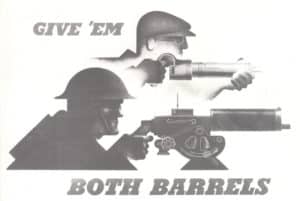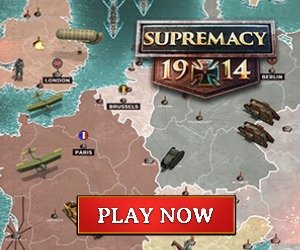The monthly days of 1942:
Table of Contents
- January 1942
- February 1942
- March 1942
- April 1942
- May 1942
- June 1942
- July 1942
- August 1942
- September 1942
- October 1942
- November 1942
- December 1942
1942 – America enters War.
The year 1942 is characterized by the entry of the USA into WW2.
Within a few days, the industrial power and the military potential of the strongest nation on earth were opposed not only to Japan, but also to Germany and Italy. And Japan’s intended decisive blow proved just to be a short-term setback for the Allies.
Despite the prevailing deterioration in diplomatic and economic relations between the US and Japan, most objective observers believed that the leaders of Japan had no need to engage in a war with America. The rich British, French and Dutch possessions in the Far East lay more or less unprotected at their doorstep, while the German Operation Barbarossa offered similar opportunities for expansion in Eastern Siberia and the Far East of Russia.
They did not, however, reckon with the boundless arrogance, the political naiveté, and the sheer stupidity of the military clique led by General Tojo, who in October 1941 had attained absolute control over the Japanese government. As well, they had not taken into consideration the prominent vanities of the Japanese naval commander.
Admiral Yamamoto had for many years been heavily involved in the development of the aircraft carrier. In November 1941, he was able to deploy six fast and large aircraft carriers that could accommodate more than 350 modern and powerful aircraft, many of which were armed with the new ‘Taranto type’ torpedoes designed to be dropped even in shallow water. In addition, were armor-piercing bombs for the carrier-based dive-bombers available. Even more impressive were the A6M2 Zero, the first carrier-based fighters which were superior to their counterparts from land bases.
But despite the seemingly unrestrained enthusiasm for these new weapons, Yamamoto remained a traditionalist in his heart. He missed searching and destroying the three US fleet carriers that were on sea outside of Pearl Harbor that day. Satisfied with the sinking of five battleships and the destruction of 188 aircraft, Yamamoto was convinced that the latter following decisive battle in the open sea between the ‘remains’ of the US Navy and the Japanese Combined Fleet with the support of his great new flagship, the super-battleship Yamato, and the other 10 battleships, would decide the day.
Yamamoto stubbornly clung to his secret passion for the mighty battleships, and six months later, these unfounded and contradictory ideas in the Battle of Midway were to contribute significantly to the defeat of the Japanese ‘Combined Fleet’.
Since the Japanese had consciously decided to attack a key position of one of the world’s greatest powers, they would have been well advised to inflict the greatest damage. Before the turnaround, the Japanese carrier task force should at least have launched a third wave of aircraft that would have destroyed the still undamaged installations and stockpiles, including the long-accumulated, almost irreplaceable fuel reserves.
Thus, Yamamoto’s attack on Pearl, despite all catastrophic short-term effects, became a glorified raid only. When it was over, the Japanese fleet secretly retreated into the vast, empty space of the North Pacific as quickly as it had come.
A question can not be left unanswered. Would Yamamoto really have to attack Pear Harbor at all on that fateful Sunday? Would not it has been better to play a waiting game instead?
Many experts have pointed out that if the Japanese had only carried out the rest of their complex offensive strategy, including the invasion of the American Philippines, the US Pacific Fleet would have been forced to leave Pearl Harbor and went on a long journey to the West Pacific. There they would have encountered the Japanese practically in their home waters, where they could have used their powerful bomber force from land bases, like the fate of British battleships HMS Prince of Wales and Repulse.
Not only were Tojo and Yamamoto responsible for commanding an incomplete attack at the wrong time, but they also showed an astonishing lack of political understanding. By this only ‘notorious, cowardly’ action, the Japanese leaders had turned a reluctant, disunited, political opponent into a purposeful deadly enemy, in which the desire for revenge related to all conceivable military possibilities.
Hitler’s declaration of war to the US on December 11 was another turning point.
Between September 1939 and December 1941, it became clear that the gradual increase in American material and moral support for the oppressed British, and the inevitable involvement of the US Navy in the Battle of the Atlantic, would sooner or later result in a war between America and Germany.
Roosevelt himself would like to fight since a long time against Hitler, but Congress and public opinion did not allow this. In the US, there was a strong feeling to regard the war in the Pacific as ‘our war‘ and the European theater as ‘their war’ and to concentrate all efforts against Japan.
Under the leadership of Roosevelt, however, America committed itself to a ‘Germany-first policy’, which was to determine the course and result of WW2. In 1940 America, the ‘great arsenal of democracy’, produced only limited quantities of military equipment. Three years later US armament production exceeded that of Germany, Italy and Japan together. Until to 1945, 15 million Americans have served in the US armed forces.
References and literature
Der 2. Weltkrieg (C. Bertelsmann Verlag)
Zweiter Weltkrieg in Bildern (Mathias Färber)
Kriegstagebuch des Oberkommandos der Wehrmacht, Band 1-8 (Percy E. Schramm)
Chronology of World War II (Christopher Argyle)
Das Deutsche Reich und der Zweite Weltkrieg (10 Bände, Zentrum für Militärgeschichte)
A World at Arms – A Global History of World War II (Gerhard L. Weinberg)






